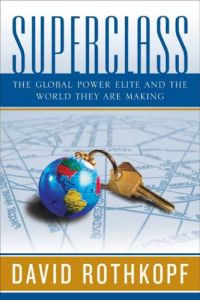Join getAbstract to access the summary!

Join getAbstract to access the summary!
David Rothkopf
Superclass
The Global Power Elite and the World They Are Making
FSG, 2008
What's inside?
What do Angelina Jolie and Osama bin Laden have in common? Find out in this guide to the world’s “superclass.”
Recommendation
Conspiracy theories thrive on mystery, and no group is more mysterious than the planet’s richest, most powerful people. Former U.S. Undersecretary of State David Rothkopf attempts to shed light on these shadowy figures using his experience with – and his detailed research into – their feeding habits and environments. Rothkopf deftly intersperses firsthand knowledge with hard data in describing the clout, backgrounds and goals of the people he identifies as the “superclass.” The result is a thorough examination of the 6,000 members of the global elite, their sources of power and the staggering amounts of money they control. The book comes alive in its behind-the-scenes tales of how these movers and shakers really roll. Rothkopf coyly demurs from listing them, while name-dropping plenty – but he sometimes bogs down in theory and conjecture. getAbstract suggests this who’s who of the rich and famous to those seeking a glimpse of how the superclass runs the world.
Summary
About the Author
David Rothkopf wrote Running the World: The Inside Story of the National Security Council, among other publications. He heads an international advisory firm and is a visiting scholar at the Carnegie Endowment for International Peace. He is a former U.S. deputy undersecretary of commerce for international trade policy and past managing director of Kissinger Associates.
















Comment on this summary